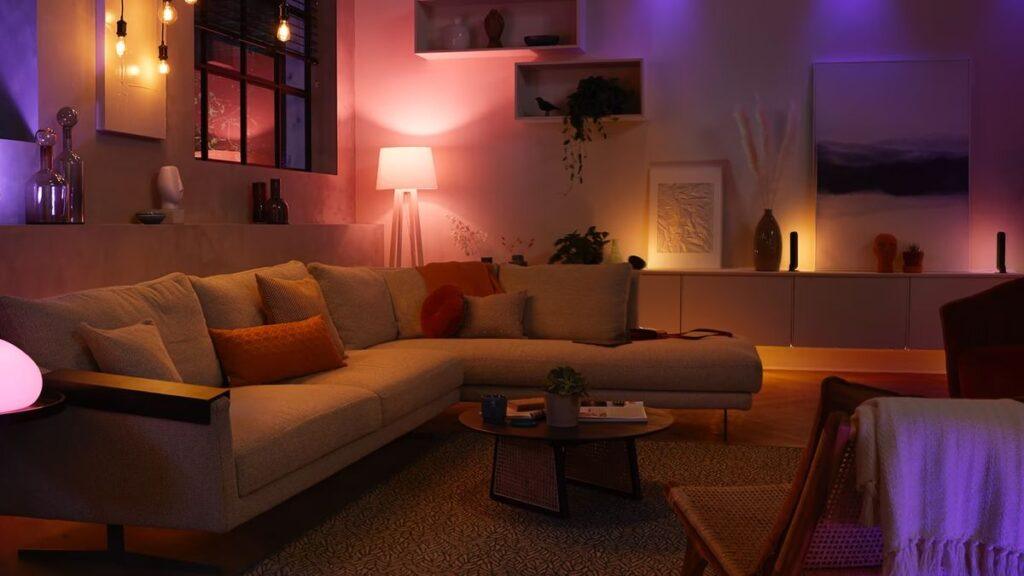- The Connectivity Standards Alliance teased an update to the Zigbee protocol
- The update will let Zigbee devices like Hue lights act as presence sensors
- We don’t yet have a timeline for when the feature might launch
Your Philips Hue lights could soon get a lot smarter thanks to a free firmware update that would let them act as presence sensors. It involves an update to the Zigbee wireless protocol and can allow your bulbs and lamps to register your presence without the need for additional hardware.
When you connect your smart lights, switches and other devices to a Philips Hue Bridge, it creates a mesh network using the Zigbee protocol. This allows all devices to communicate with the bridge and each other and receive over-the-air (OTA) firmware updates to fix bugs and add new features.
This week, the Connectivity Standards Alliance (CSA), the organization behind Zigbee, announced a new feature called Ambient Sensing that will let Zigbee devices like Hue lights sense if you’re home without additional hardware. It will be available for both new and older devices and will be rolled out via an OTA update.
In a short video, CSA explained that Ambient Sensing will “unlock new user experiences such as autonomous lighting control and home security, all while enjoying privacy by running 100% locally without adding presence sensors in every room.”
Look at
When is it coming?
As Mike Robinson of TechCrawlr explains, it’s still early days for Ambient Sensing. CSA hasn’t offered a timeline for when it will roll out, and Signify (the company behind Philips Hue) hasn’t given any indication whether it will be available for Hue bulbs and lamps. Nevertheless, it seems like a natural addition to the Hue system and can even replace the Philips Hue Intelligent Indoor Motion Sensor.
Fabian of Hueblog.com (a reliable source of early information on Philips Hue) claims to have inside information on the subject, including some details on Ambient Sensing requirements.
“According to the information I have available, the Philips Hue function requires at least three light sources in a room, which must be placed at a certain distance and in an appropriate shape,” says Fabian. “A permanent power supply for the light sources is of course essential. It should also be possible to set the intensity of the motion detection.”
Signify already has some interesting plans for the coming year, including an AI assistant that will create custom light scenes for you using voice commands, but this sounds like a more practical and potentially more useful feature. I’ll keep my ear to the ground for more news and update you as soon as I know more.



